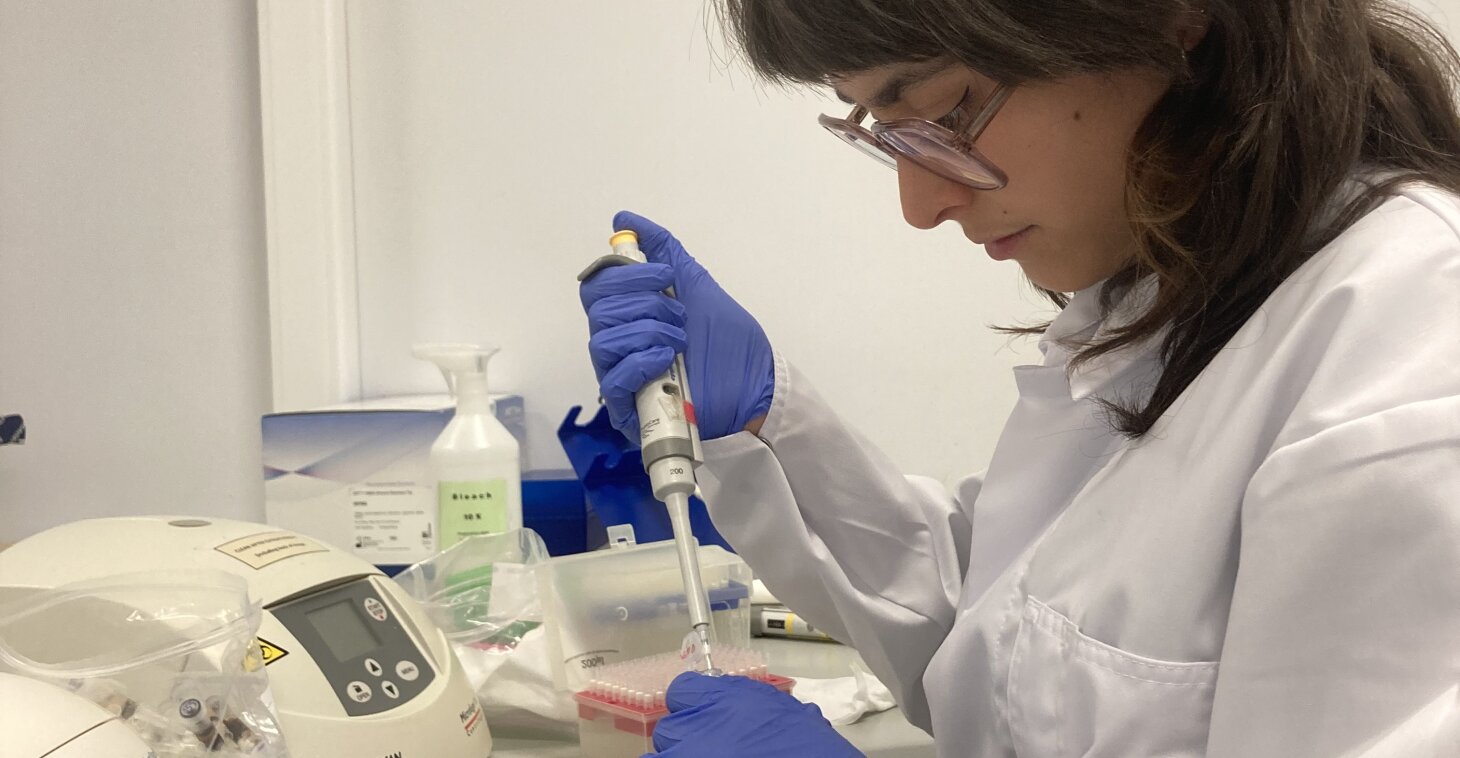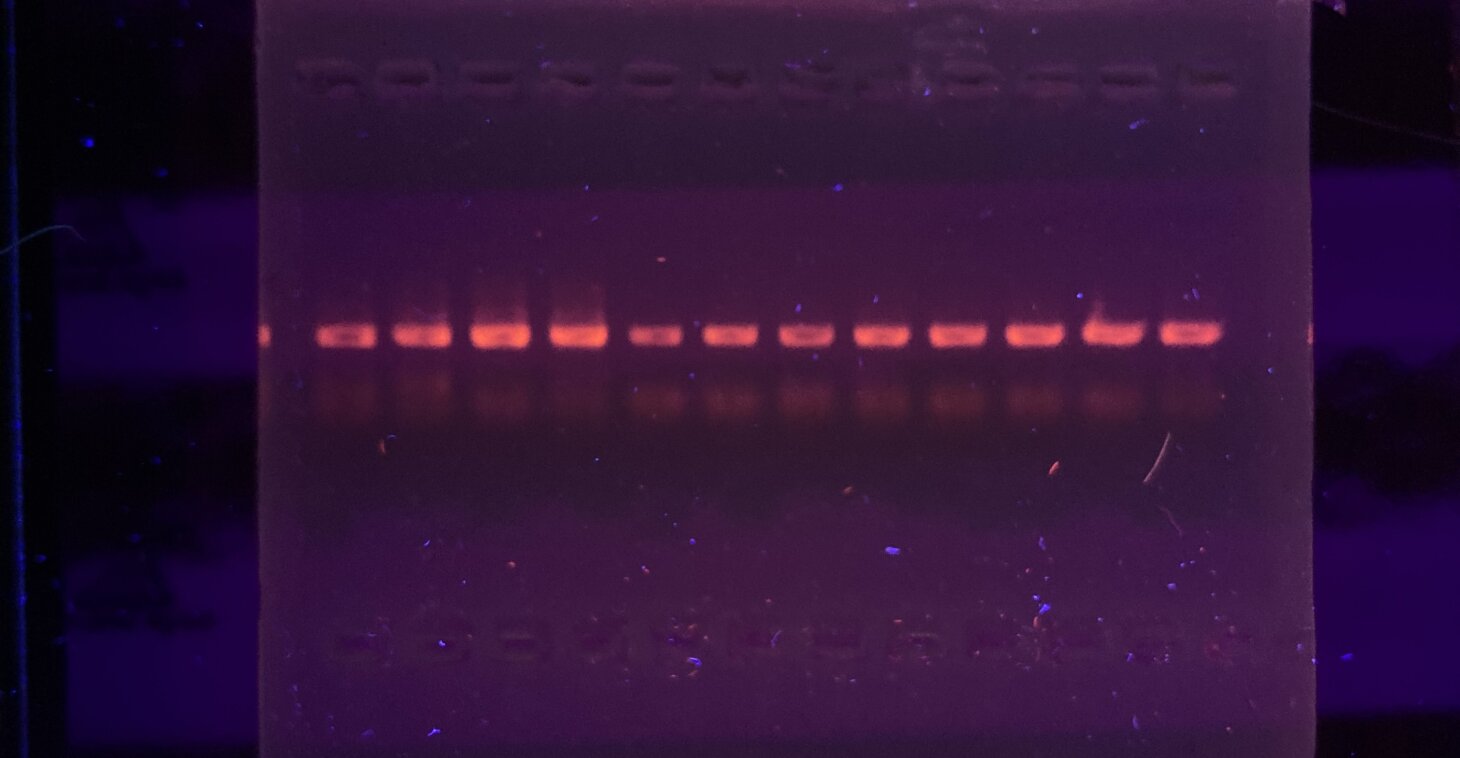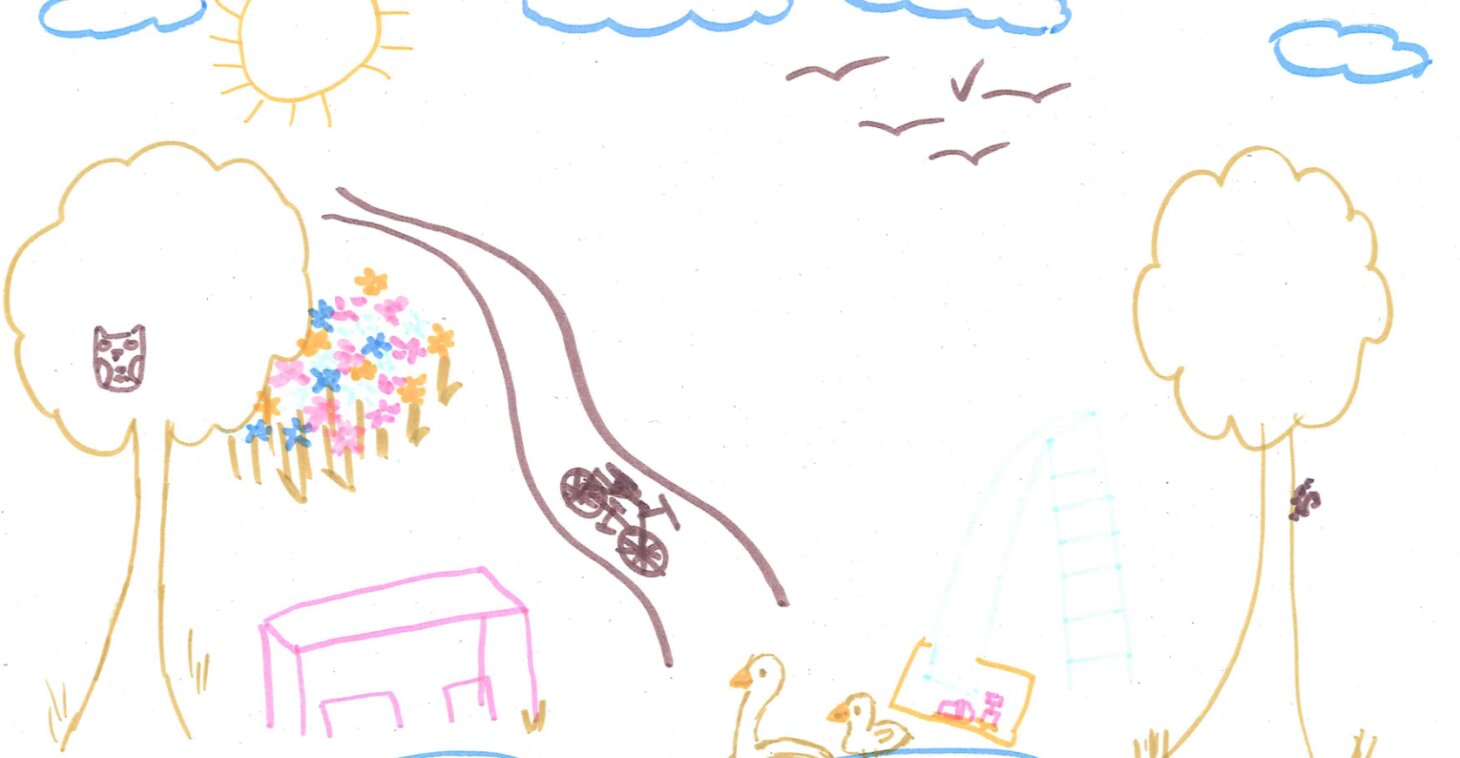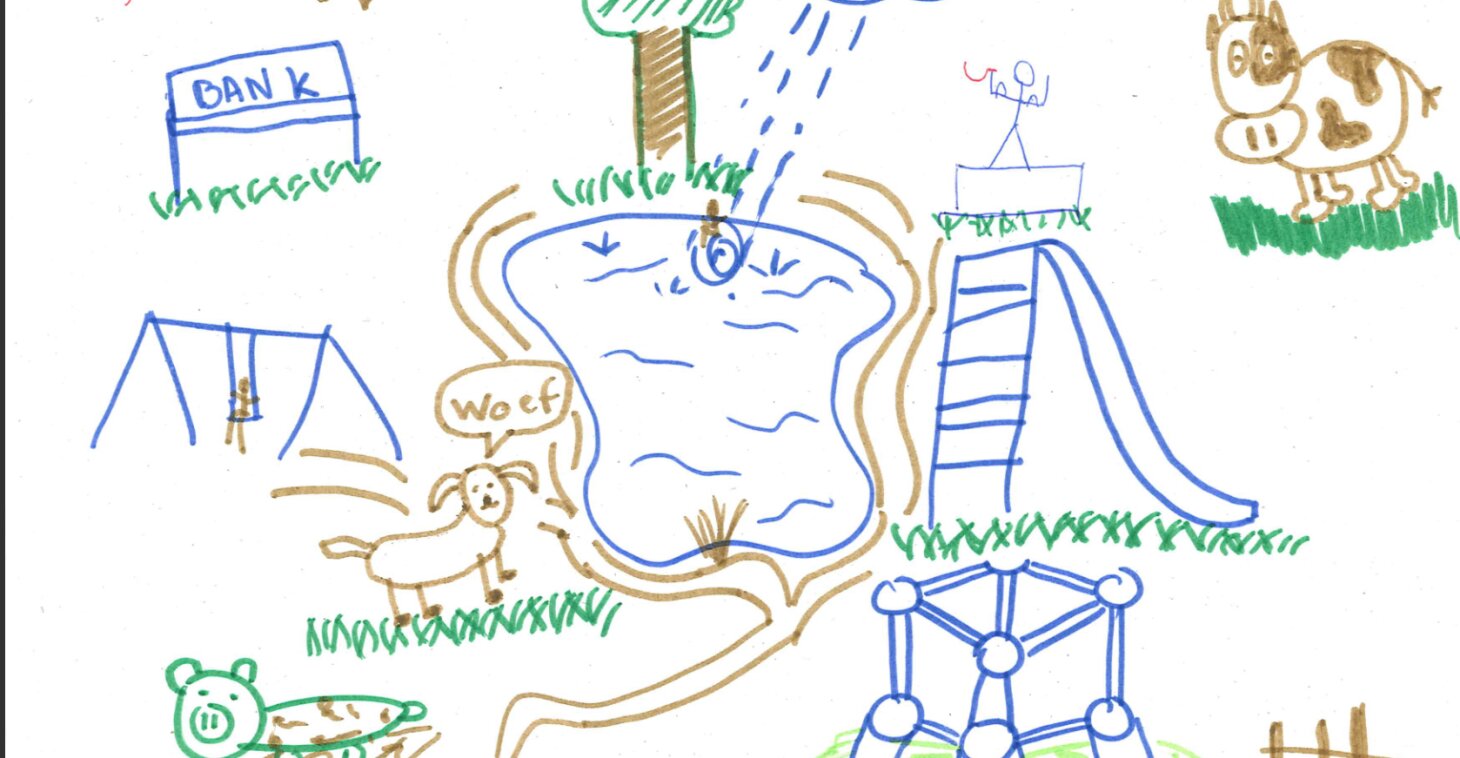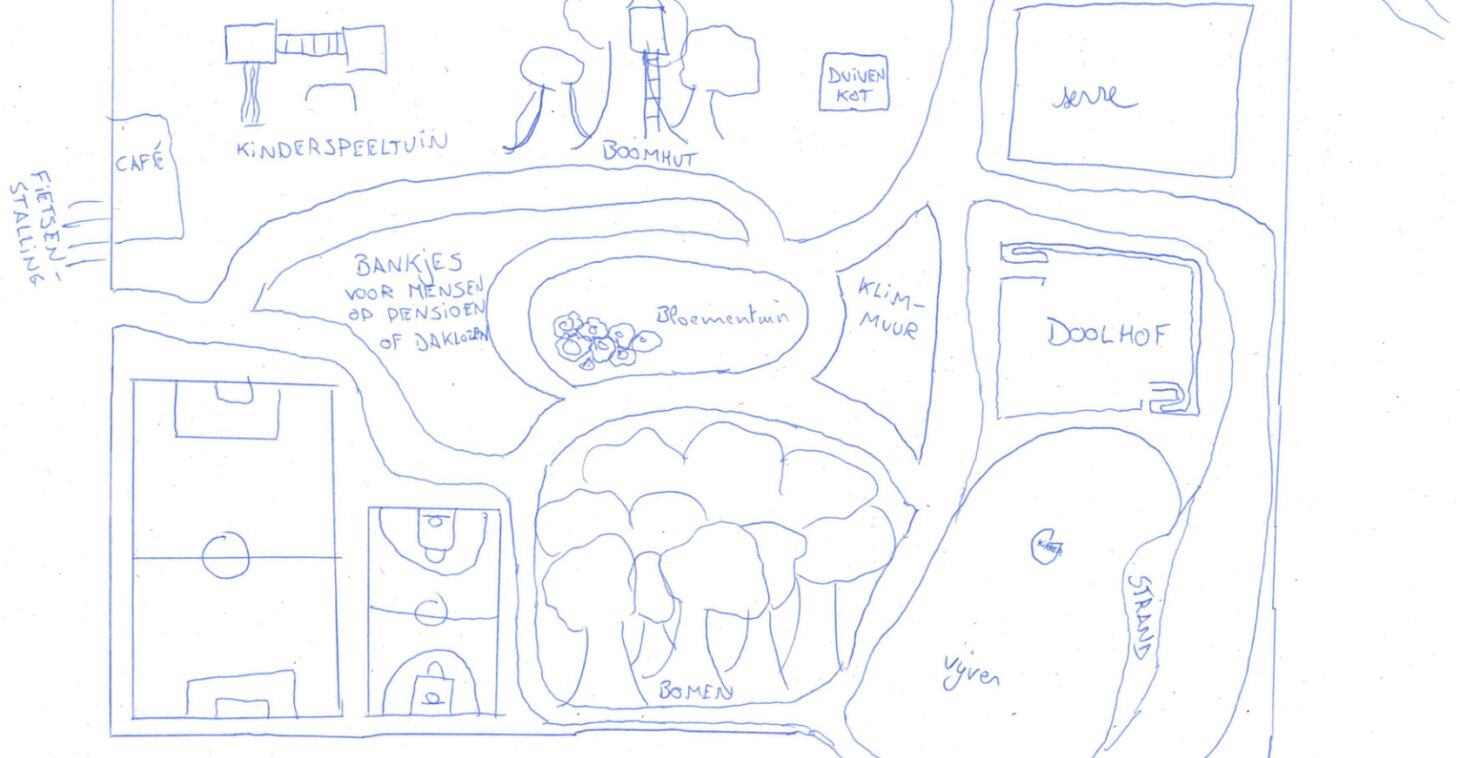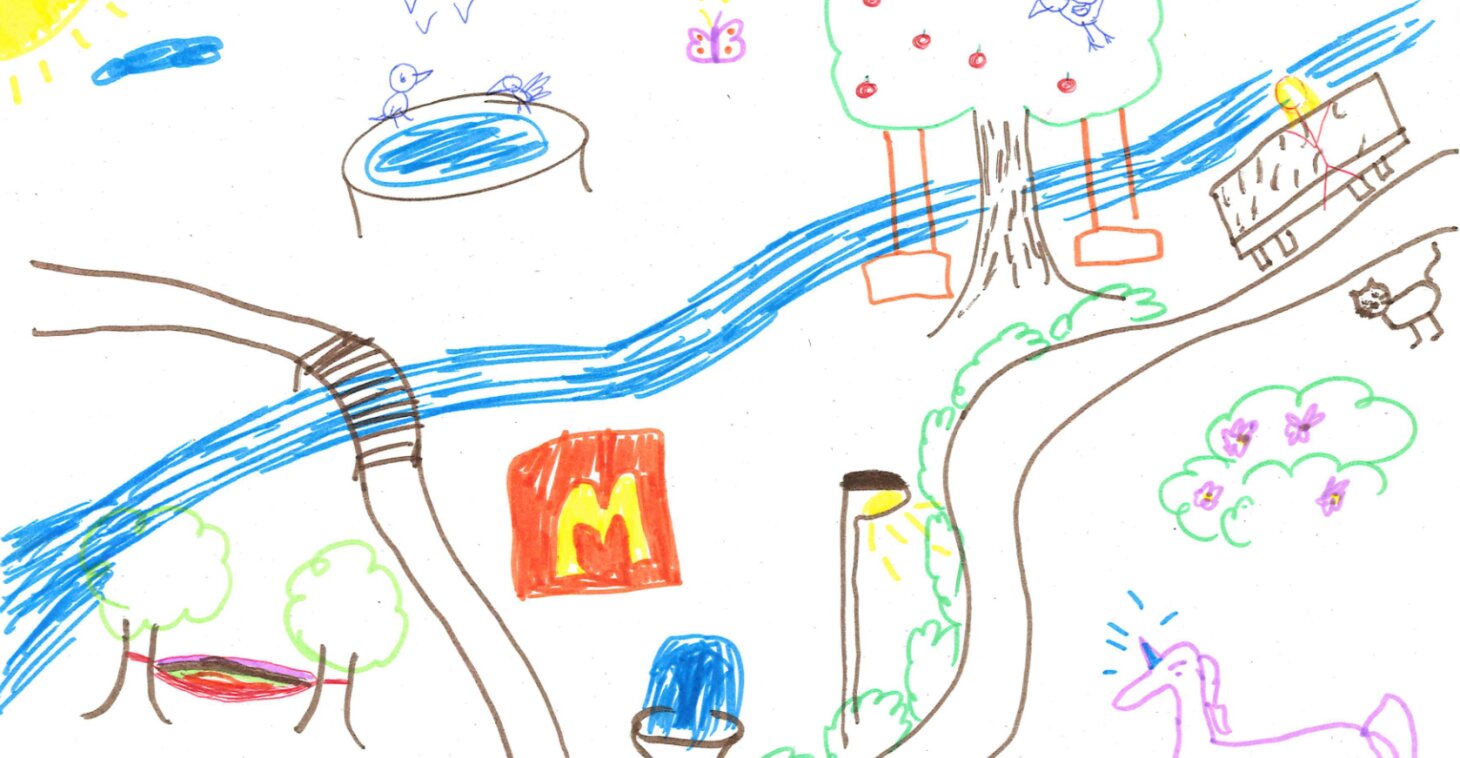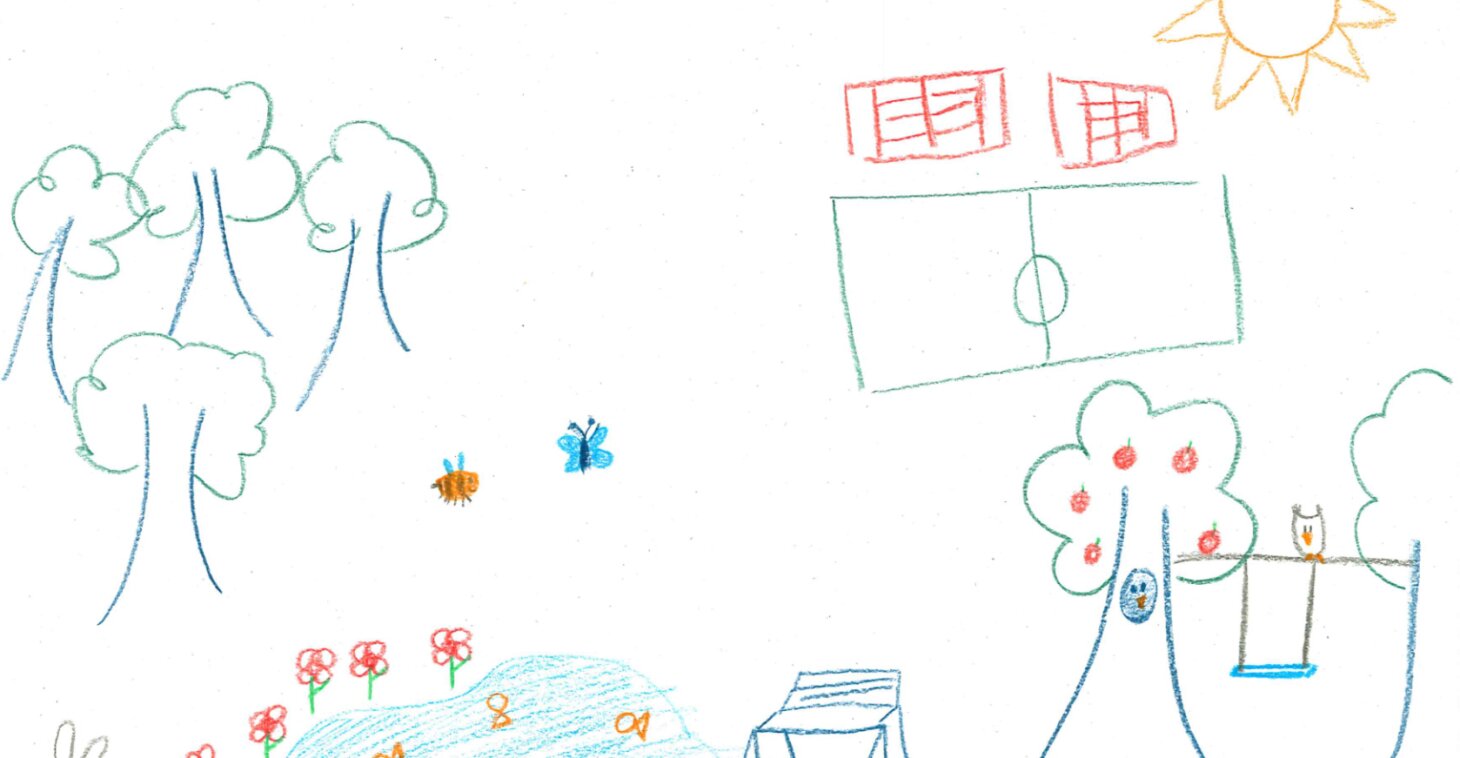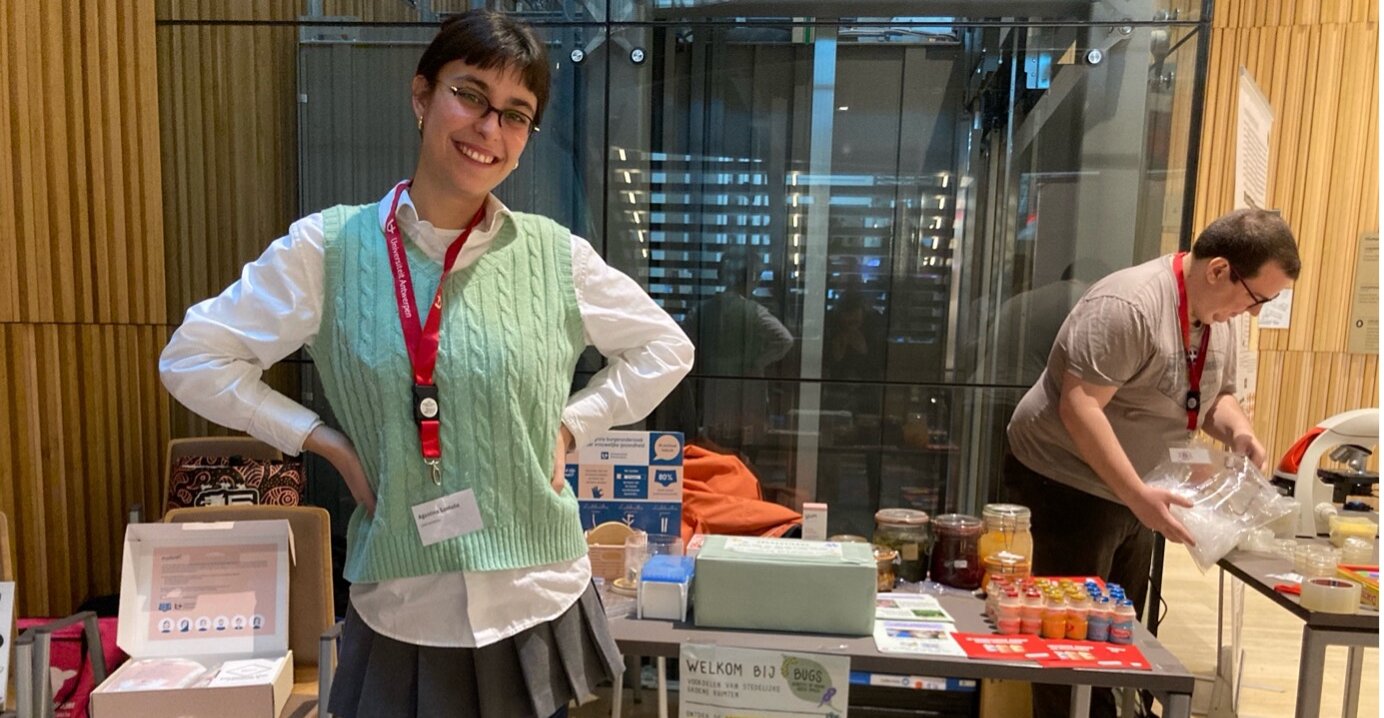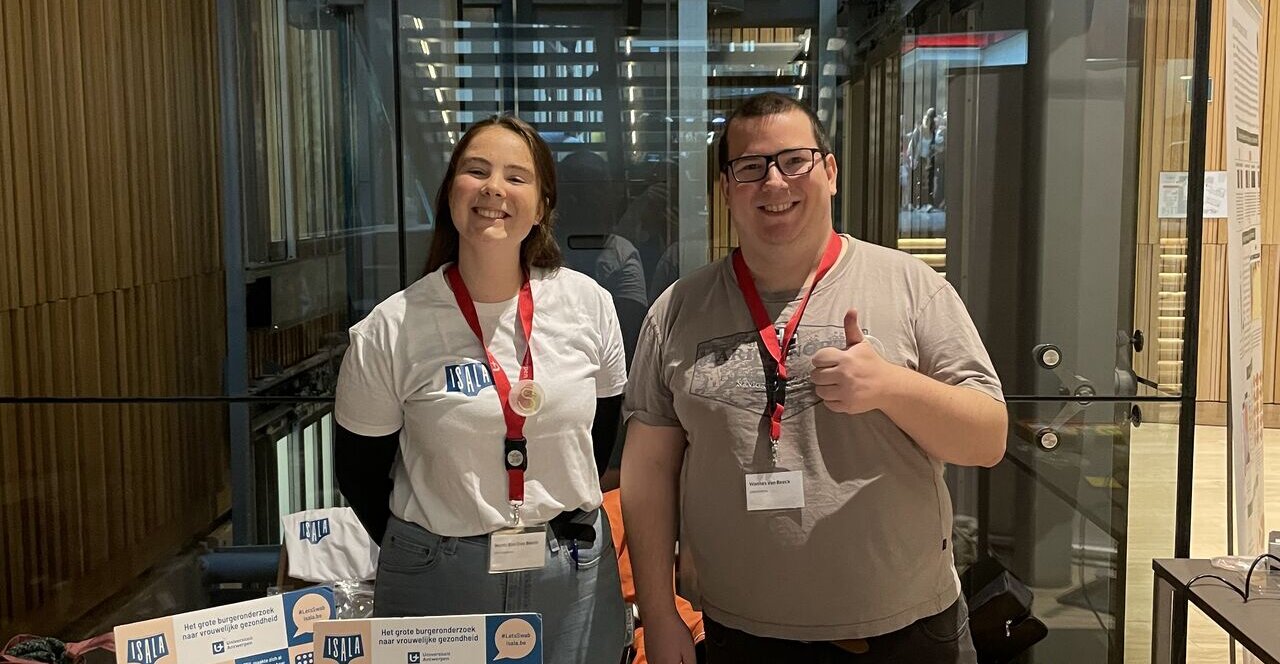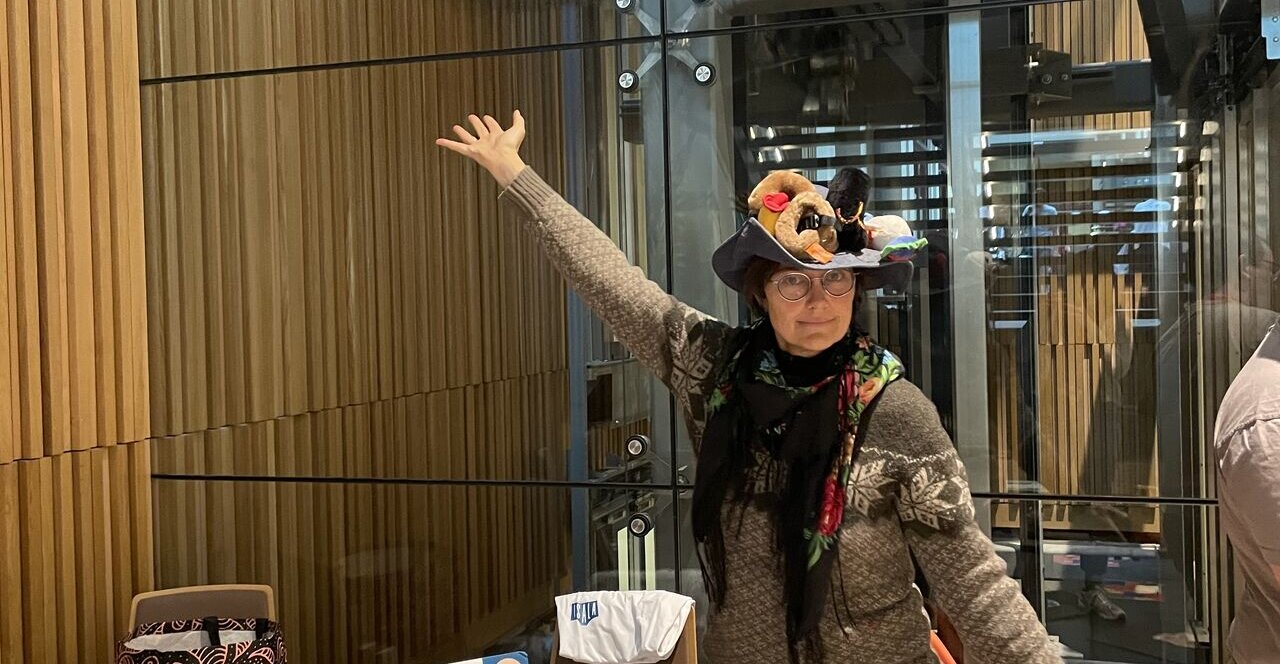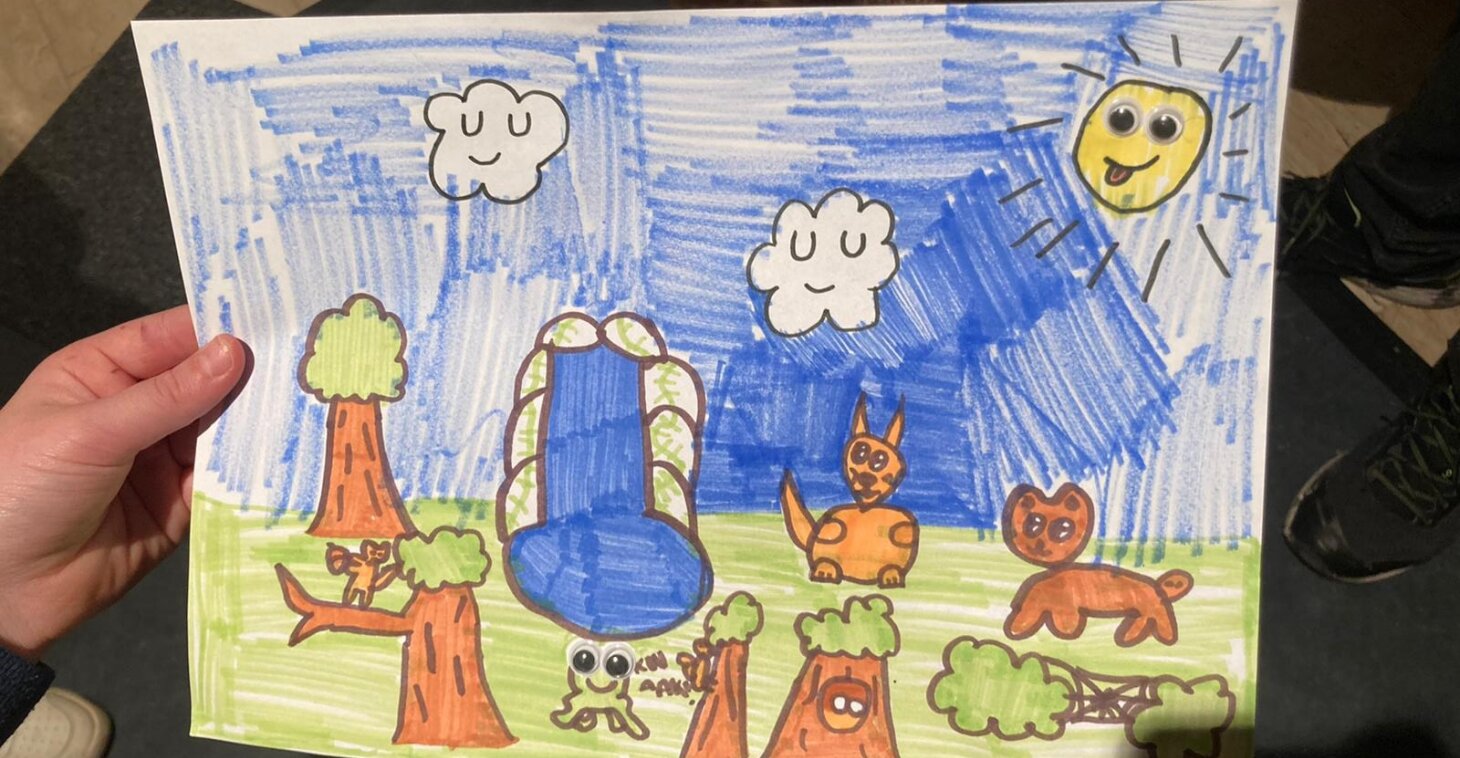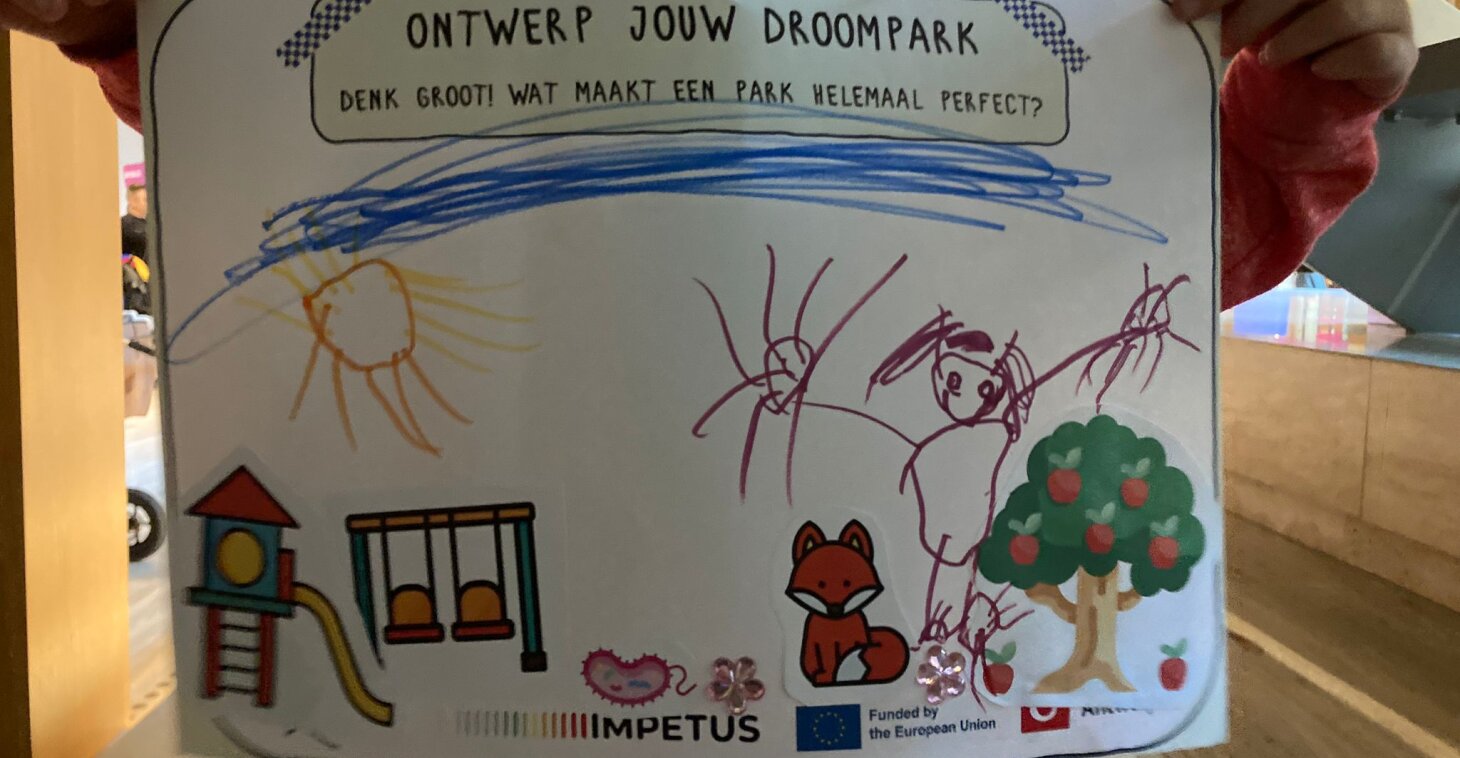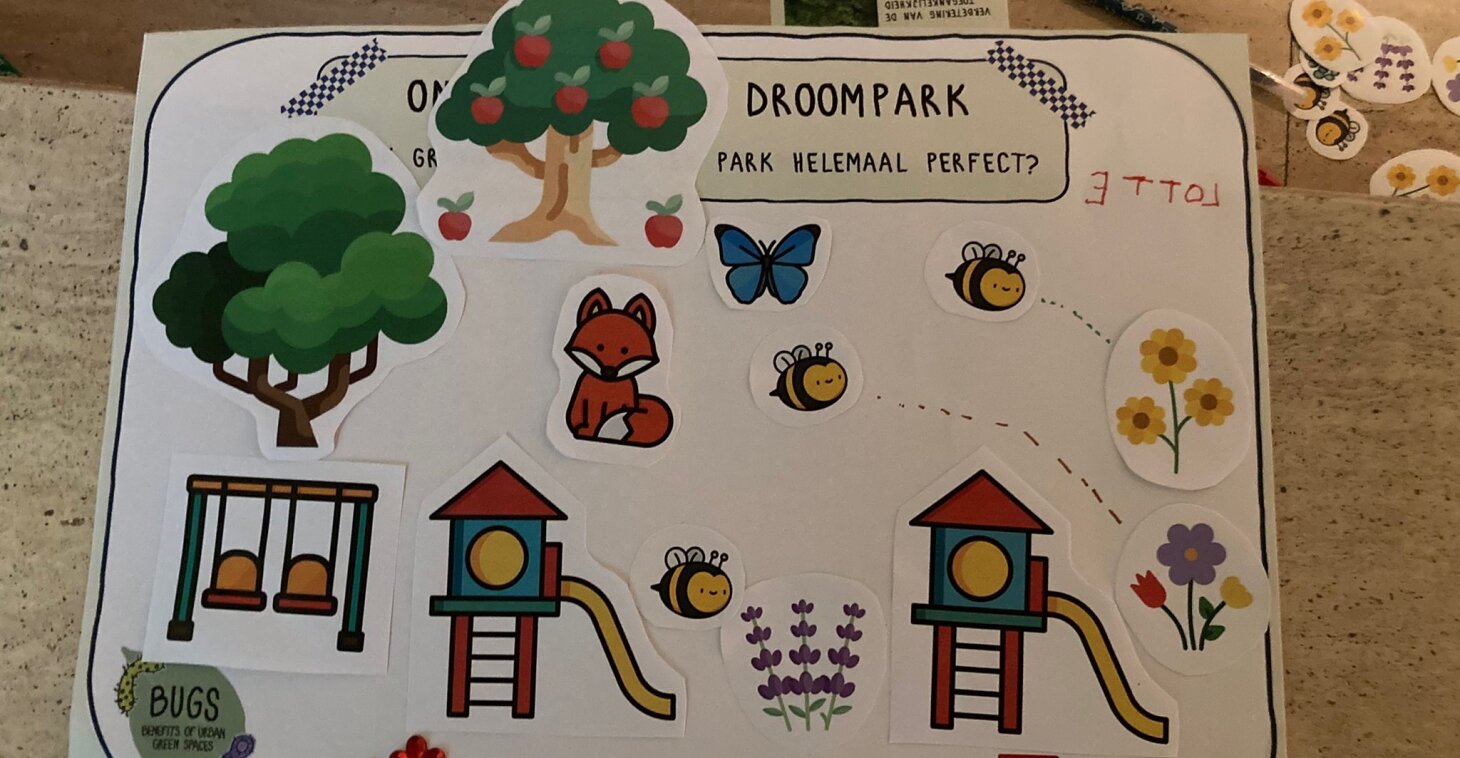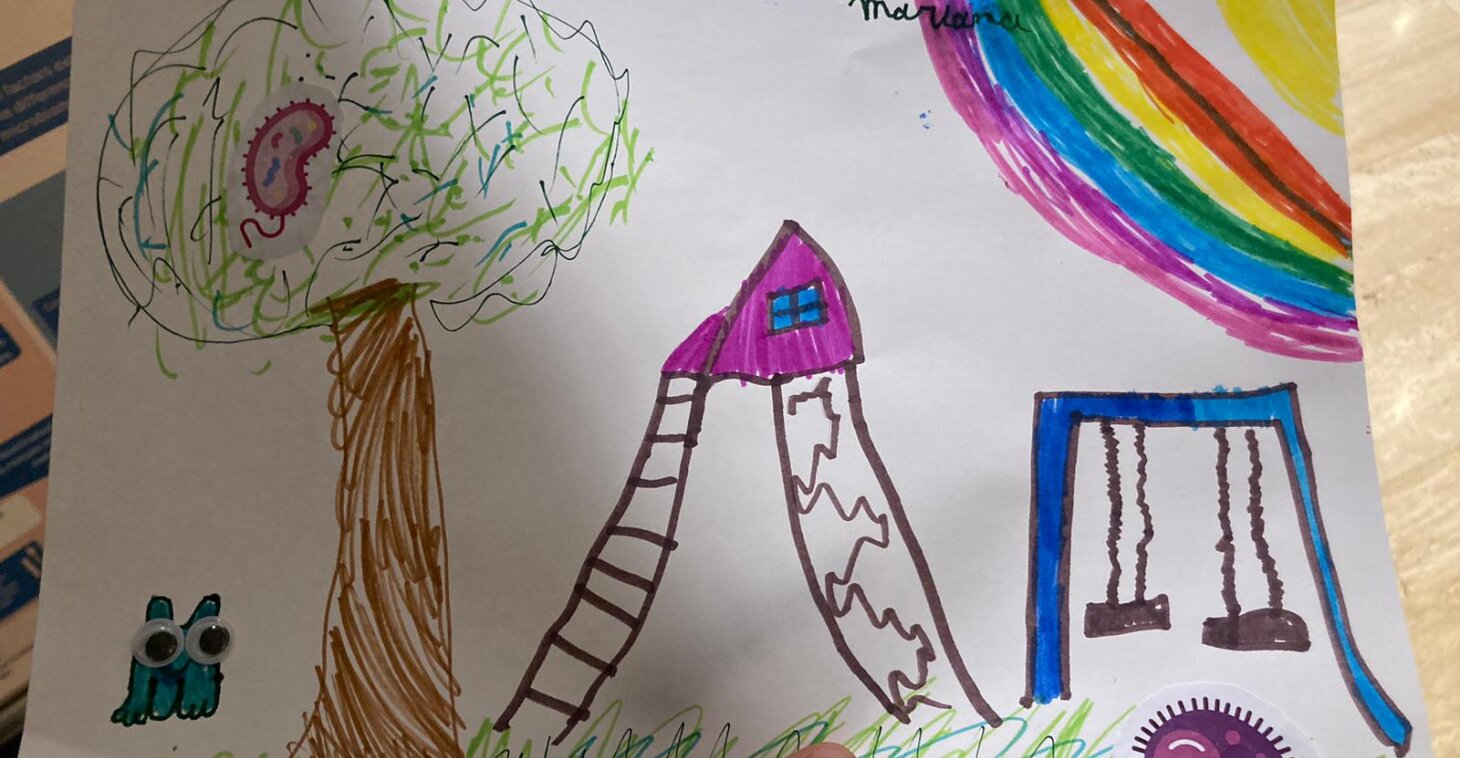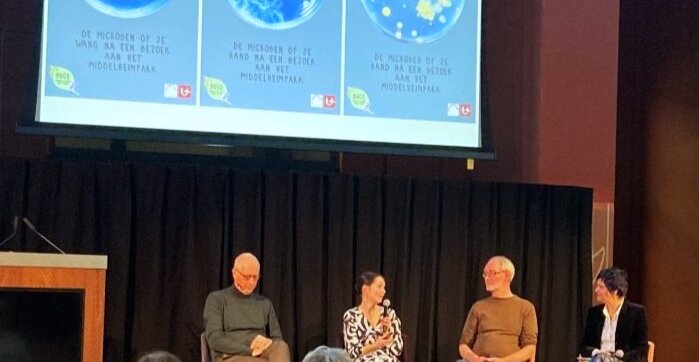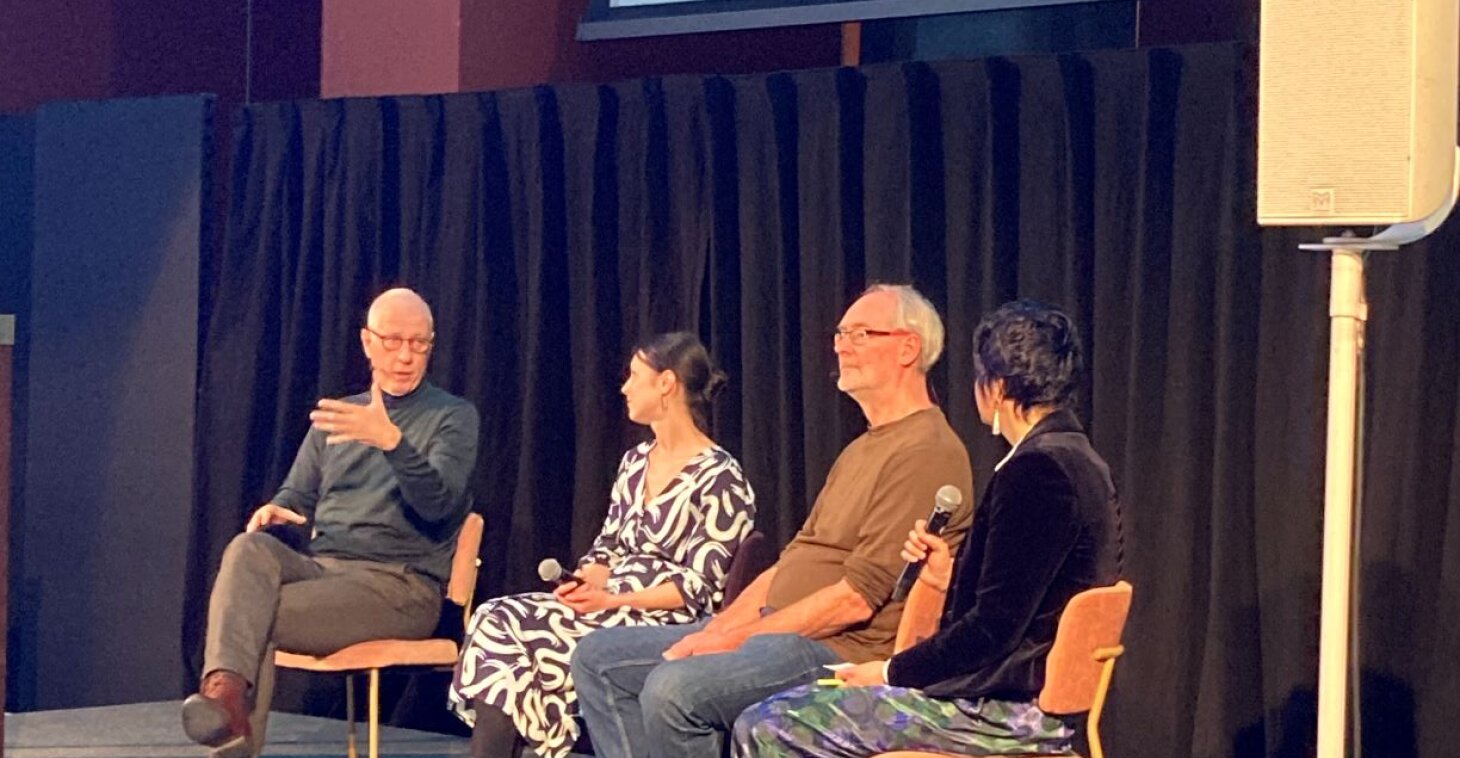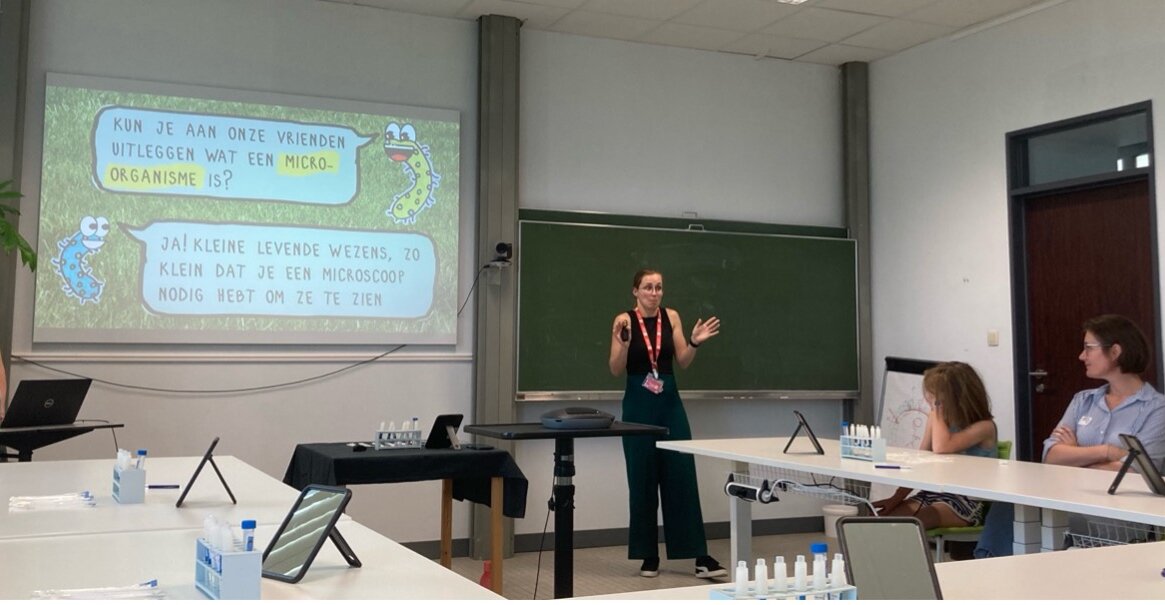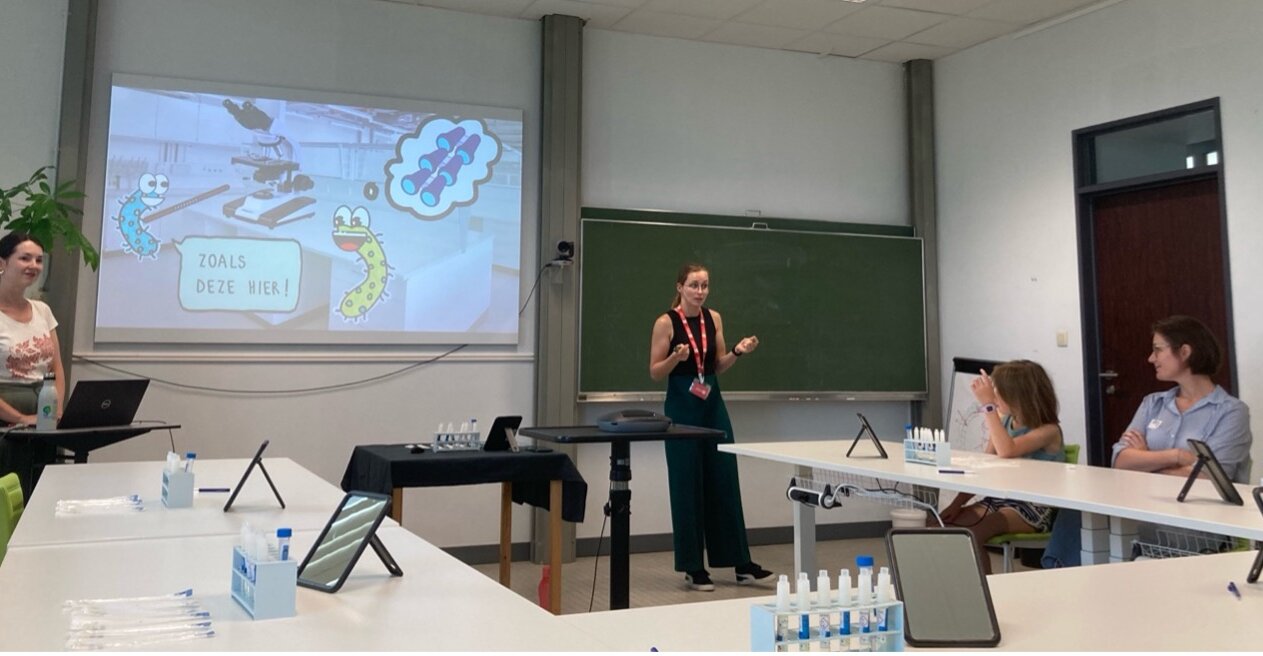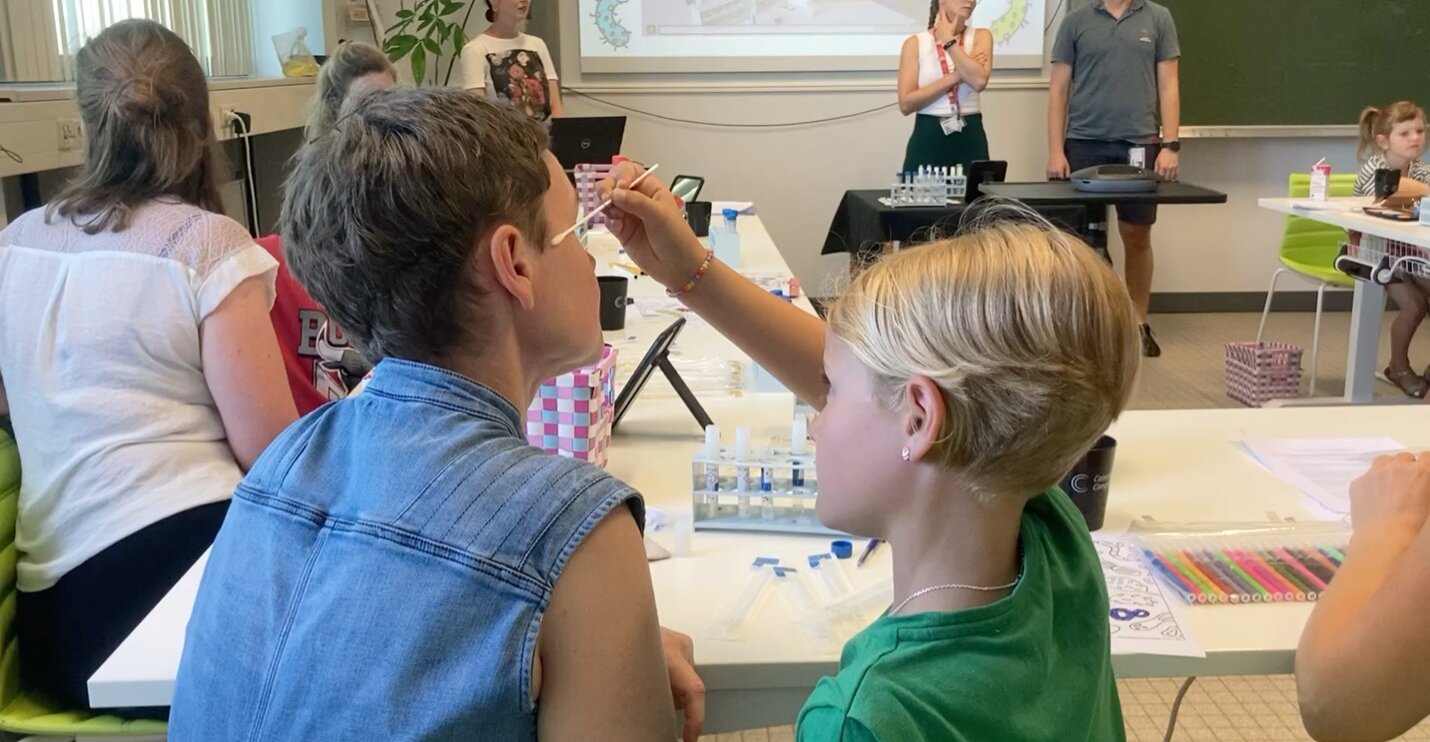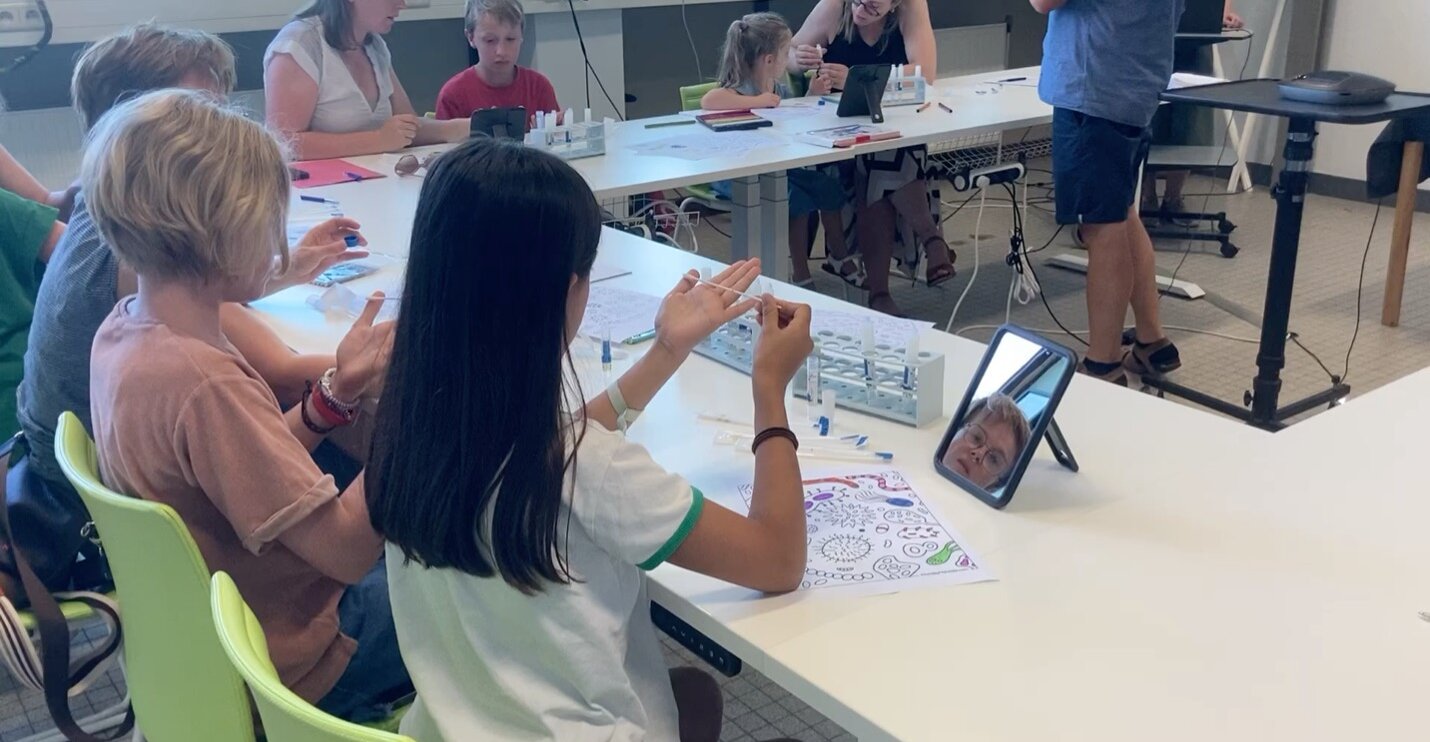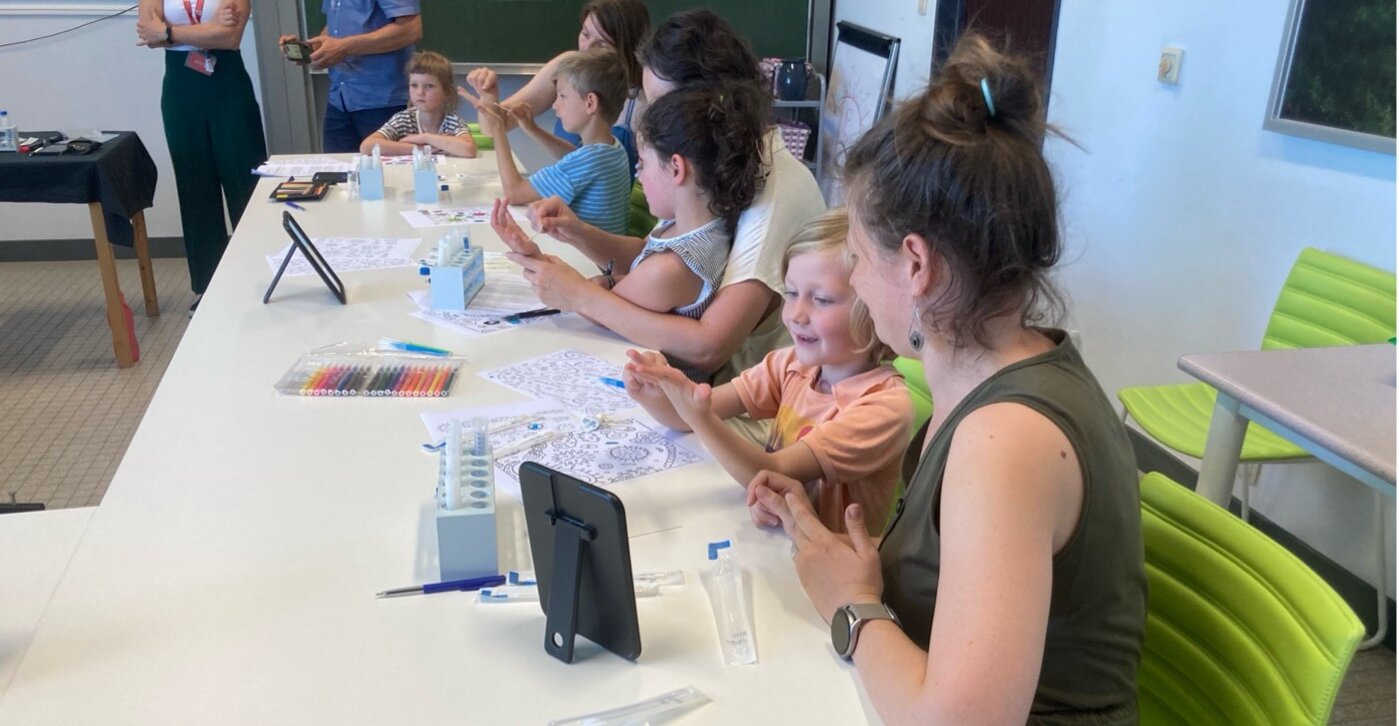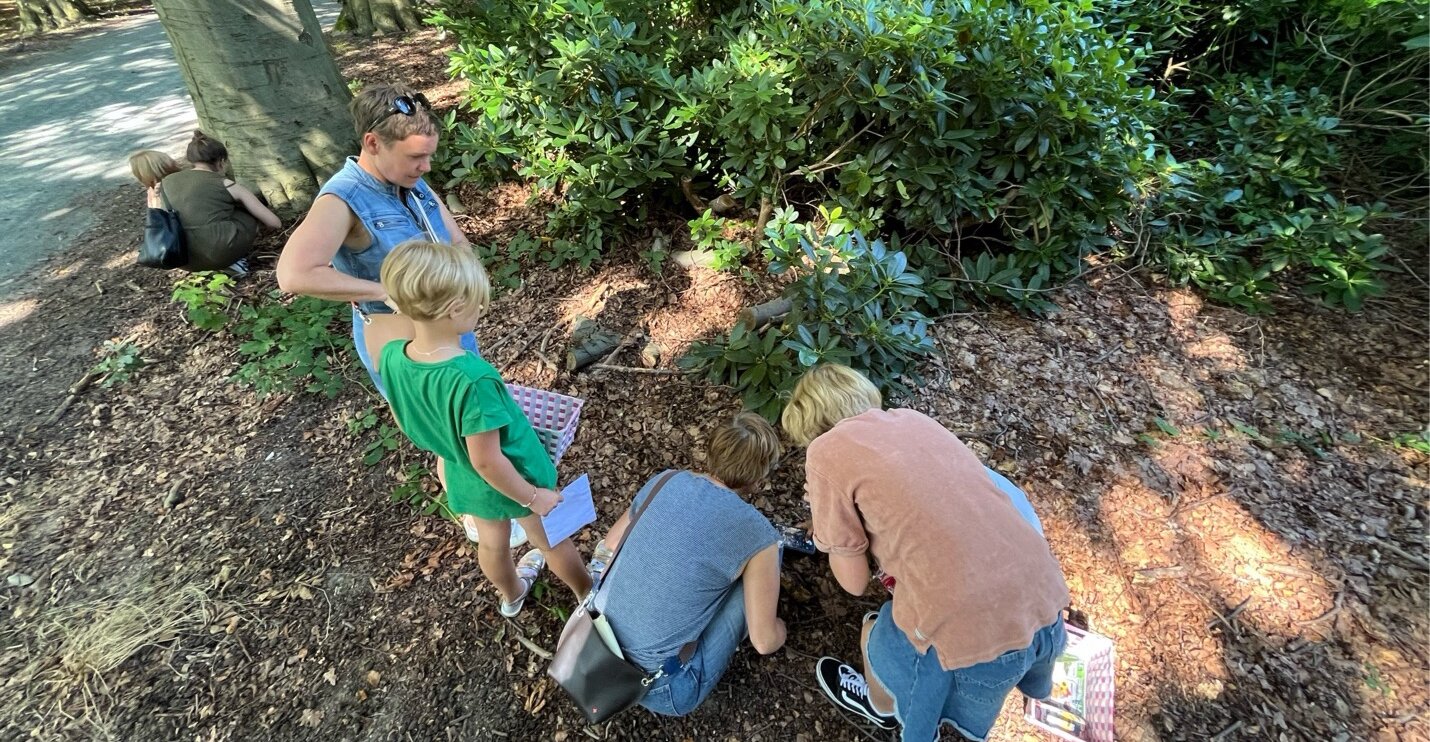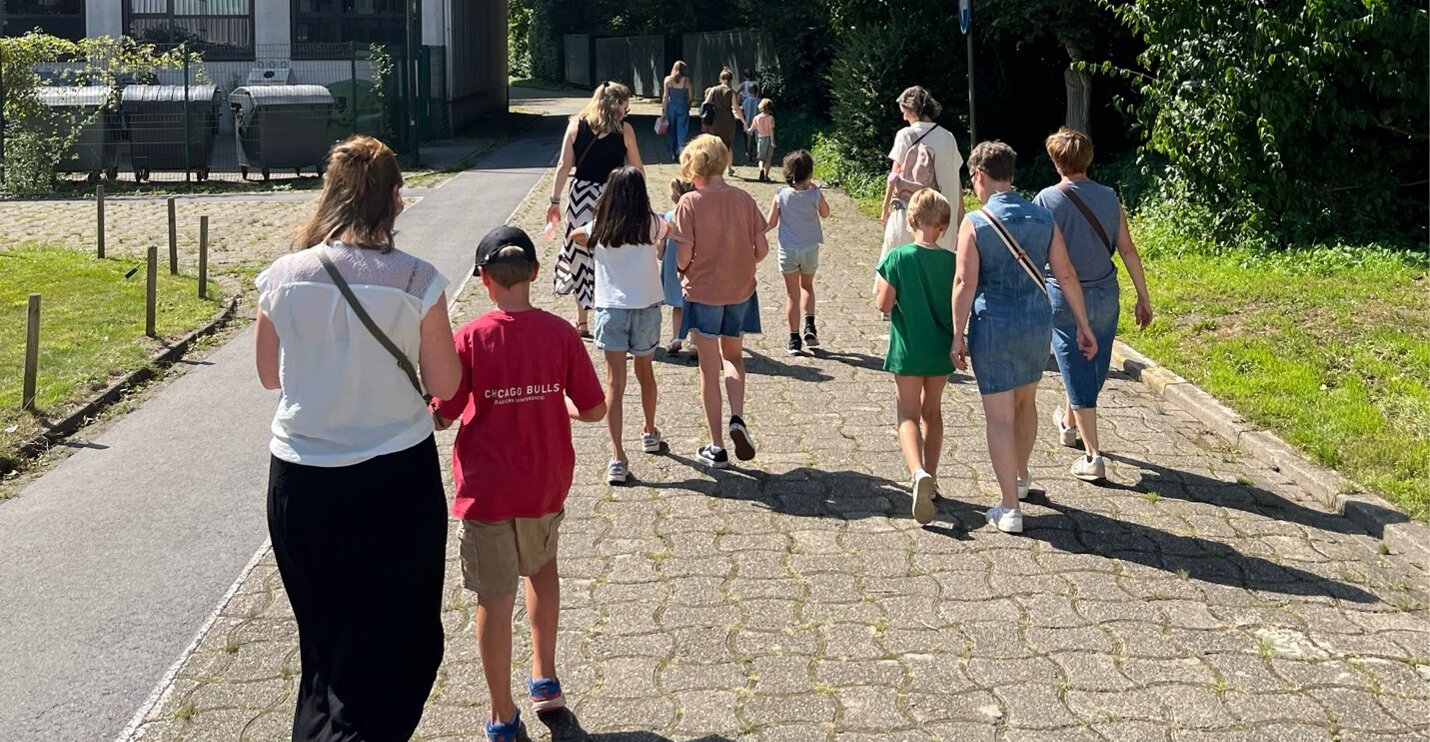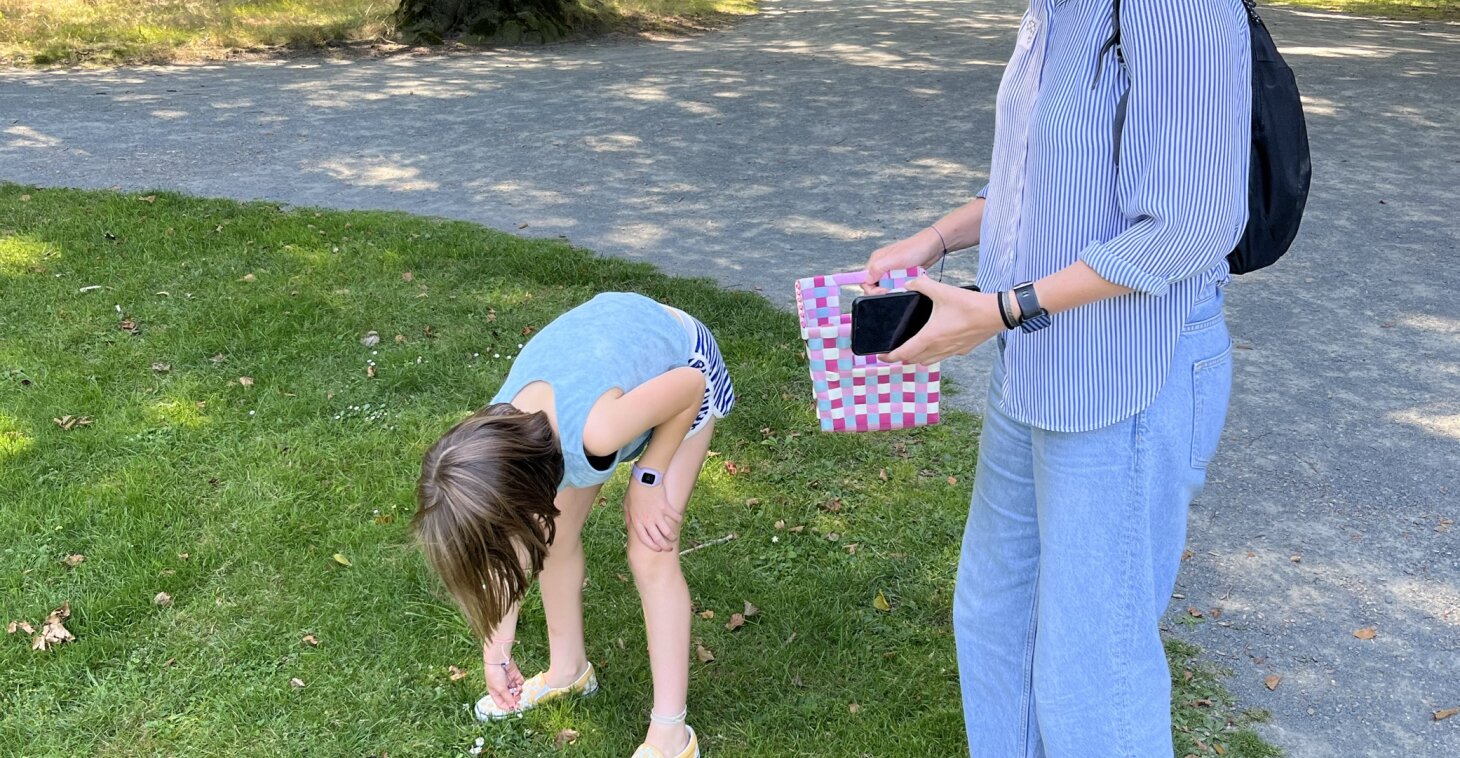What’s happening with the BUGS samples?
This summer, citizen scientists collected microbes from their skin and noses before and after visiting a park. This experiment was designed to explore how bacteria from urban green spaces might transfer to people during their visit. Now, we’re in the lab, processing these samples for microbial sequencing! This method allows us to identify which bacteria are present in the samples and learn more about how they transfer from parks to the people who visit them.
The samples are carefully processed to help us understand the interactions between humans and their environment at a microbial level, revealing how our exposure to green spaces can impact the microorganisms around us. We are excited to dive into the data and share our findings with you!
❓What is sequencing?
Sequencing is a method used to read the genetic information found in DNA, which acts as the instruction manual for all living things. DNA is present in every cell and contains the codes that tell living organisms how to grow, develop, and function. DNA is made up of building blocks called “nucleotides.” The order of these nucleotides forms the DNA sequence, and each sequence is unique to each organism.
Think of it like reading a book—sequencing helps us “read” the DNA to find out which bacteria are present in the samples, and it allows us to identify them in detail.
🔬 How does it work?
Here’s a simple breakdown of the process:
1. DNA extraction – First, we isolate the bacterial DNA from the samples. This is done by removing all other molecules, like proteins, leaving only the DNA behind. This process helps us focus solely on the bacteria. You can see our team member Agustina Santullo performing DNA extraction in the first photo!
2. PCR amplification – PCR stands for polymerase chain reaction, a process you might remember from Covid testing. In this step, we make many copies of the bacterial DNA so we have enough to study. This is crucial because the DNA in the samples may be present in very small amounts. We know the amplification was successful when the DNA shows up under a special light, glowing brightly, as shown in the second picture.
3. Sequencing – After the DNA has been amplified, we send the samples to a sequencing center, where a machine reads the DNA. This step is like scanning the instruction book for all the genetic details. We then use bioinformatics to compare the DNA sequence against large databases and identify the bacteria present in the samples.
We’re very excited to see what we discover, and we’ll keep you updated as we continue processing the samples and analyzing the results. Stay tuned for more!
BUGS in the Classrooms of the University of Antwerp
The BUGS project recently made its way into the classrooms of the University of Antwerp! Prof. Dr. ir. Irina Spacova, main PI of BUGS, introduced the project to Bachelor students in Bioscience Engineering during her course on nature-based solutions for human health in cities and microbial contact.
As part of the session, students were invited to get creative and draw their ideal park. This activity ties directly to the BUGS research on urban green design, exploring preferences, concerns, and imaginative solutions for improving green spaces.
These students, many of them young adults at the start of their careers, bring fresh perspectives to urban design. Teenagers and young adults are often overlooked in conversations about urban planning, despite being among the most active users of green spaces. This activity provided an invaluable opportunity to understand what matters most to this age group when it comes to creating accessible, inclusive, and inspiring green spaces.
These drawings complement similar activities conducted during the Day of Science with children and responses from the BUGS online survey. Together, they provide a unique perspective on how different age groups envision accessible and inspiring urban green spaces.
________________________________________________________________________________
BUGS at the Day of Science in Antwerp
Last week, the BUGS project took part in the Day of Science in Antwerp, a fun science fair where families and children could explore all kinds of exciting topics. The event was full of activities designed to spark curiosity in young minds, making it the perfect opportunity to share our work with the next generation of scientists!
Our colleagues from the Department of Bioscience Engineering at the University of Antwerp, specifically the LAMB (Lab of Applied Microbiology) research group, set up an amazing stand about the many fascinating projects happening at LAMB. Visitors could learn about everything from the BUGS project to research on the vaginal microbiome (ISALA project), fermented foods, and more—all connected to the incredible world of microorganisms.
Creative Activities and Children's Perspectives
At the BUGS corner, we invited kids to design their ideal park! Using paper, markers, and printed elements like trees, animals, flowers, and playgrounds, the children created colorful and creative drawings. This activity is an important part of our research because we want to learn how to make urban green spaces more accessible, fun, and welcoming for everyone—especially for kids. Asking children to share their ideas helps us see what they think is most important in a park, and their creativity gives us fresh insights to improve these spaces.
Why do we care about children’s opinions on parks? At BUGS, one of our main goals is to understand how parks can better serve the people who use them. Children often use parks for playing and exploring, but their voices are rarely heard when it comes to designing these spaces. By asking kids to draw their ideal park, we get a direct look at what they need and want. Their ideas inspire us to think about urban green spaces in new ways that support biodiversity, play, and community.
Conversations on Healthy Nature
The Day of Science wasn’t just about hands-on activities—it was also a platform for thought-provoking discussions. Prof. Irina Spacova, co-leader of BUGS, represented the project during the EOS Grijze Cellen discussion on Healthy Nature, joining Prof. Hans Bruyninckx and Prof. Hans Keune in a panel moderated by Ilse Boeren. Together, they explored big questions about the relationship between nature in cities, human health, and biodiversity preservation.
The BUGS project’s focus on the link between microorganisms in urban parks and human health resonated strongly with the audience. Events like this not only help share the science behind our work but also inspire deeper connections between citizens and the scientific community.
Connecting with the Community
Visitors to our stand also got to learn more about the BUGS project’s mission: studying how urban green spaces affect the microbial biodiversity around us and how this, in turn, impacts our health. From developing self-sampling kits for citizen scientists to organizing hands-on workshops, BUGS is all about connecting people to the natural and microbial ecosystems in their cities.
Thank you to everyone who visited the stand, shared their ideas, and joined the activities. A special thanks to the LAMB team for organizing such a fun and educational space, and to Prof. Irina Spacova for representing BUGS in the engaging EOS discussion.
________________________________________________________________________________
Citizen-science for families: become a scientist for a day!
We're thrilled to announce that the BUGS workshop was an incredible success! The event was a perfect blend of laughter, learning, and hands-on science. Many families joined us at the Department of Bioscience Engineering and Middelheimpark to explore the fascinating world of microorganisms that live in urban green spaces. From start to finish, the day was packed with activities that engaged participants of all ages, offering a unique opportunity to discover how these tiny creatures can help improve human health and so much more.
The highlight of the workshop was a training on microbial sampling, where children and adults got the chance to become a scientist for a day. Participants learned how to take microbial samples from their own skin and nose microbiomes before and after visiting Middelheimpark using professional techniques. Through this hands-on experience, they gained a deeper understanding of the microscopic world that lives on and within us – a world that is vital to our health and well-being.
Our incredible little citizen scientists were truly brilliant during this process - they collected the samples with enthusiasm and concentration! We are now in the phase of processing these samples, and we are excited to discover the microbial insights into the benefits of urban green that will come from their efforts.
But the day wasn’t just about science! There was plenty of time for fun and play in the park, where families and new friends connected with nature and with each other, and created memories.
A heartfelt THANK YOU to everyone who participated and made this event so special. Your curiosity, energy, and engagement are what made the BUGS workshop such a huge success. A special thank you too to our amazing team, that did an incredible job.
Stay tuned for more updates as we continue to explore the wonders of the microbial world—there’s more to come!
